 by "ttyymmnn" (ttyymmnn)
by "ttyymmnn" (ttyymmnn)
Published 11/03/2017 at 12:35
 by "ttyymmnn" (ttyymmnn)
by "ttyymmnn" (ttyymmnn)
Published 11/03/2017 at 12:35
Tags: planelopnik history
; Planelopnik
STARS: 13
!!! UNKNOWN CONTENT TYPE !!!
Welcome to
This Date in Aviation History
, getting of you caught up on milestones, important historical events and people in aviation from November 1 through November 3.
!!! UNKNOWN CONTENT TYPE !!!
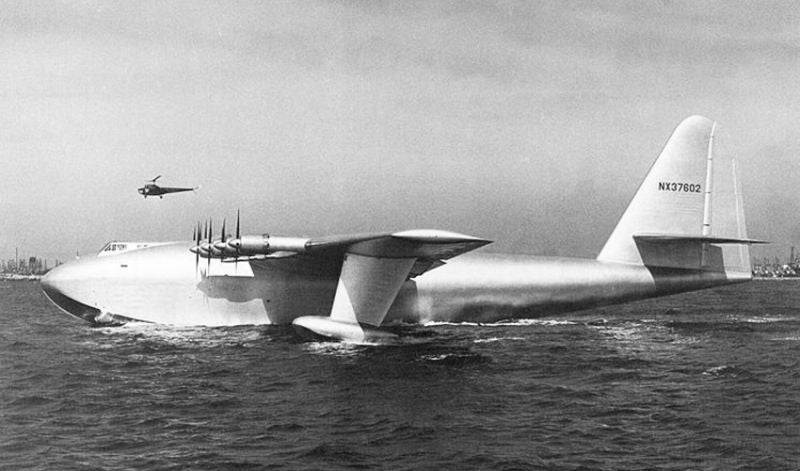
November 2, 1947 – The first flight of the Hughes H-4 Hercules. There’s no question that Howard Hughes was an eccentric man. Known for his reclusive behavior, he was also one of the wealthiest people of his generation. Through his varied interests and investments, Hughes managed to grow a $1 million inheritance into a billion-dollar empire that encompassed interests in investing, film making, real estate and philanthropy. But to some, he is best known for his efforts in aviation, first with the formation of Hughes Aircraft Company in 1932 and later with his purchase of a controlling investment in Trans World Airlines in 1939. Hughes had a fascination with speed and air racing, and built the Hughes H-1 Racer , in which he set numerous speed records. The H-1 was also the last privately-developed aircraft to set a world speed record. He developed other aircraft for the US military, none of which were particularly successful, but ironically, Hughes is best known for his greatest failure, the H-4 Hercules.
Popularly known as the Spruce Goose , the Hercules was conceived early in WWII by shipbuilder Henry J. Kaiser and built by Hughes Aircraft in the hopes of providing the US Army with a transatlantic cargo plane that would be capable of carrying either 150,000 pounds of cargo, 750 fully equipped troops, or two M4 Sherman tanks weighing 30 tons each. Hercules was an apt name for the plane, because it was a true behemoth and the largest flying boat ever built, and its wingspan of 320 feet 11 inches remains the longest in the history of aviation. In an effort to save weight and conserve metal, the Hercules was constructed almost entirely of birch (not spruce, but that doesn’t have quite the same poetic ring to it), and was powered by eight Pratt & Whitney R-4360 Wasp Major radial engines each producing 3,000 horsepower. The H-4 was constructed in Hughes’ Los Angeles factory, then a house moving company transported the disassembled aircraft to Long Beach, where it was reassembled for flight testing.

With Hughes at the controls, the Hercules made two uneventful taxi runs, then, on the third, Hughes lifted the
Spruce Goose
off the surface of the water. The giant aircraft rose to about 70 feet, flew at 135 mph for about a mile, then settled back onto the water—and never flew again. It is impossible to know if the
Spruce Goose
would have met its design objectives. Its first flight came more than two years after
VJ Day
and the US government was no longer interested in such a huge, propeller-powered cargo plane. The
Spruce Goose
was maintained in a climate-controlled hangar for 30 years, and eventually acquired by the Disney company, who had plans to develop a theme park around it, and placed on display in 1980. It was later transferred to the Aero Club of Southern California and now resides at the
Evergreen Aviation and Space Museum
in McMinnville, Oregon.
(FAA photo; Los Angeles Times photo)
!!! UNKNOWN CONTENT TYPE !!!
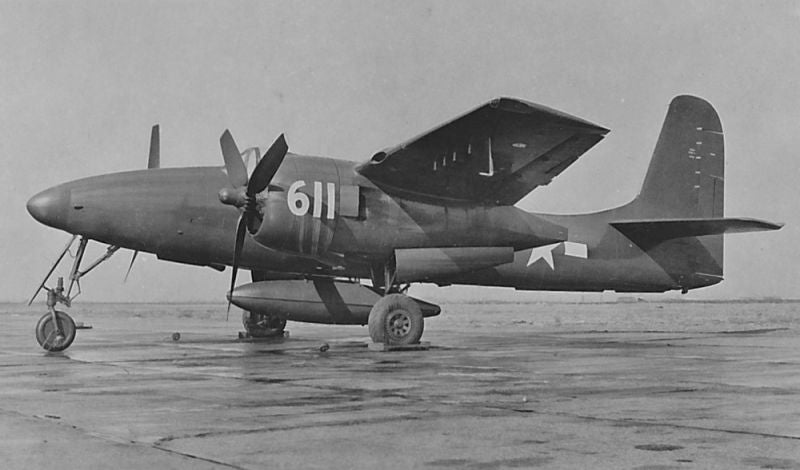
November 2, 1943 – The first flight of the Grumman F7F Tigercat. During WWII, the piston powered fighter reached the zenith of its development. Unfortunately for the war effort, however, some of the greatest propeller planes ever produced came too late make a difference in the outcome of the war, and were soon displaced by jet-powered aircraft during the Korean War. Such was the fate of the Tigercat, one of the fastest piston-powered fighters ever built and, in the words of Navy test pilot Frederick Trapnell , “...the best damn fighter I’ve ever flown.”
Grumman has a rich history of providing warplanes for the US Navy, but the aircraft that became the Tigercat actually started out as a project by Grumman to build a twin-engine interceptor for the US Army Air Corps, the XP-50 , which itself was a development of the radical XF5F Skyrocket . But when the XP-50 prototype was lost in a crash, funding was shifted to a new design, the XP-65, and development of the Army interceptor, as well as a Navy version, designated XF7F-1, took place simultaneously. The new interceptor kept the twin engines of its predecessor, but was otherwise a traditional design, albeit with a very narrow fuselage to reduce its frontal area.

The main difference between the Army and Navy versions was that the Army’s XP-65 was equipped with superchargers. But, as development continued, it became clear that the Army and Navy had very different requirements, and those needs could not be met by a single airplane (a situation that would plague the development of the General Dynamics F-111 twenty years later). So Grumman, based on their experience building fighters for the Navy, focused entirely on the XF7F and the Army stopped pursuing the XP-65. The Navy envisioned their new aircraft both as a fighter and as a ground attack aircraft, and the Tigercat had a serious bite, and was armed with four 20mm cannons and four .50 caliber machine guns firing forward, as well as hardpoints on the wings and fuselage for bombs and torpedoes. And not only could the Tigercat hit hard, it was fast. With a top speed of 460 mph, it outpaced the Grumman F6F Hellcat by 80 mph, and was even a bit faster than the Vought F4U Corsair , one of the fastest fighters of WWII. However, the early models were not able to pass carrier qualifications and Tigercats were relegated to land bases to be used as night fighters and for photo reconnaissance. By the third variant, the Tigercat was finally cleared for carrier operations, but by this late stage only 12 were produced.
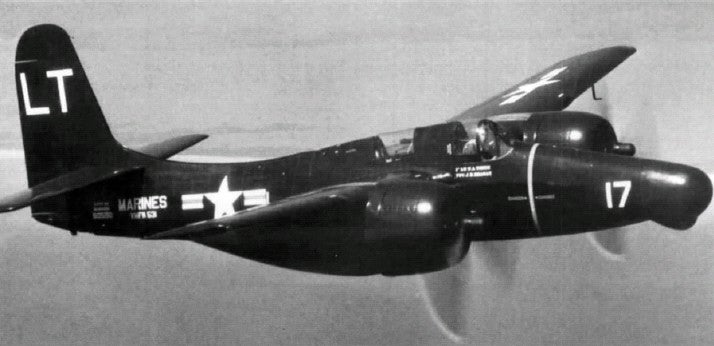
Too late for WWII, the Tigercat did see limited action in Korea as a night fighter, shooting down two Polikarpov Po-2 biplanes. But this would be its only combat success. Most Tigercats were eventually sent into storage and later scrapped, though some were bought as surplus and used as firefighting water bombers. Of the 364 aircraft produced, seven remain airworthy, and two currently are being restored, one to airworthiness. Interestingly, Grumman had originally intended to call the F7F the Tomcat, but that name was considered too risqué for the era. The name Tomcat would famously appear later on the Grumman F-14 . (Photo author unknown; photo by Dziban303 via Wikimedia Commons ; US Navy photo )
!!! UNKNOWN CONTENT TYPE !!!
!!! UNKNOWN CONTENT TYPE !!!
!!! UNKNOWN CONTENT TYPE !!!
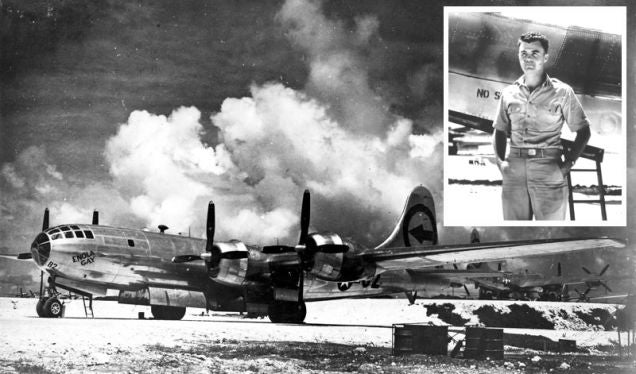
November 1, 2007 – The death of Paul Tibbets. Tibbets was born in Quincy, Illinois on February 23, 1915, and enlisted in the US Army in 1937, qualifying as a pilot a year later. As the commanding officer of the 97th Bombardment Group , Tibbets flew the lead Boeing B-17 Flying Fortress in the first daylight heavy bomber mission over occupied Europe in July 1942. After returning to the US to assist with the development of the Boeing B-29 Superfortress , Tibbets became commander of the 509th Composite Group which was tasked with dropping the nuclear bombs on Japan, and piloted the Enola Gay when it dropped the Little Boy atomic bomb on Hiroshima. Tibbets was also involved in the development of the Boeing B-47 Stratojet , and retired from the US Air Force in 1966 with the rank of brigadier general. (US Air Force photos)
!!! UNKNOWN CONTENT TYPE !!!

November 1, 1957 – The de Havilland Comet returns to service. When the de Havilland DH 106 Comet entered service with British Overseas Airways Corporation (BOAC) in 1952, it was the world’s first commercial jet-powered airliner. However, two Comets broke up in midair in 1954 with the loss 56 passengers and crew. The fleet was grounded and, after extensive water tank testing, the Comet was found to be susceptible to metal fatigue from repeated pressurizations, particularly around its large windows. All remaining and new Comets were fitted with strengthened fuselages and new oval windows, solving the problem. Though sales never completely recovered, the Comet went on to a successful 30-year career and was finally retired in 1997. (Photo by Ralf Manteufel via Wikimedia Commons )
!!! UNKNOWN CONTENT TYPE !!!

November 2, 1992 – The first flight of the Airbus A330. One of a number of derivatives of Airbus’ original A300 wide-body, the A330 has a range of up to 8,300 miles and can carry as many as 335 passengers or 150,000 pounds of cargo, depending on the variant and cabin configuration. The A330 was developed alongside the four-engine A340 , and shares a common airframe, though the A340 has a centerline wheel bogey. To accommodate different customers, the A330 was the first Airbus airliner to offer a choice of three different engines. Still in production today, over 1,200 A330s have been built, and they serve numerous civilian carriers, cargo companies, and militaries. (Photo by Alf van Beem via Wikimedia Commons )
!!! UNKNOWN CONTENT TYPE !!!
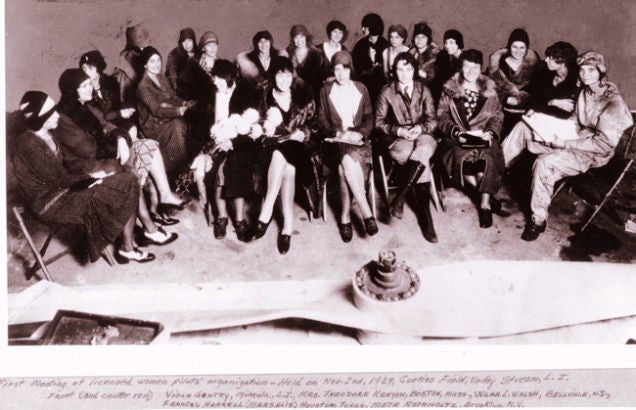
November 2, 1929 – The founding of The Ninety-Nines, an international organization of woman pilots that helps to provide professional opportunities for women in aviation and “promotes advancement of aviation through education, scholarships, and mutual support while honoring our unique history and sharing our passion for flight.” Founded at Curtiss Field in New York by 99 of the then-117 licensed female pilots, the organization counts Amelia Earhart among its charter members, and includes such notables as Jackie Cochran , Patty Wagstaff , Jeana Yeager , Sheila Scott and astronaut Eileen Collins . (Photo via The Smithsonian)
!!! UNKNOWN CONTENT TYPE !!!
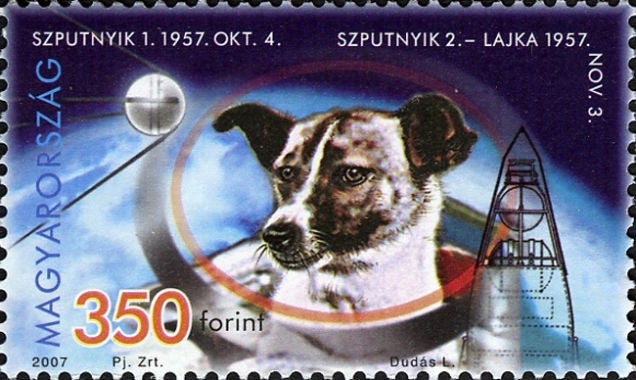
November 3, 1957 – The launch of Sputnik 2, the second spacecraft to be launched into Earth orbit and the first to carry a live animal into space. Launched atop a modified R-7 Semyorka ICBM just 32 days after Sputnik 1 , Sputnik 2 carried a dog named Laika to provide data on how spaceflight would affect a living organism. Laika survived the launch, but, by the third orbit, the temperature in the cabin rose to 109ºF and telemetry data indicated that Laika was most likely dead by the third day in orbit, either from the heat or a carbon dioxide buildup. The manner of Laika’s death caused some controversy, but the dog would have died anyway, as it was 162 days before Sputnik 2 returned to Earth and burned up on reentry. (Hungarian postage stamp)
!!! UNKNOWN CONTENT TYPE !!!
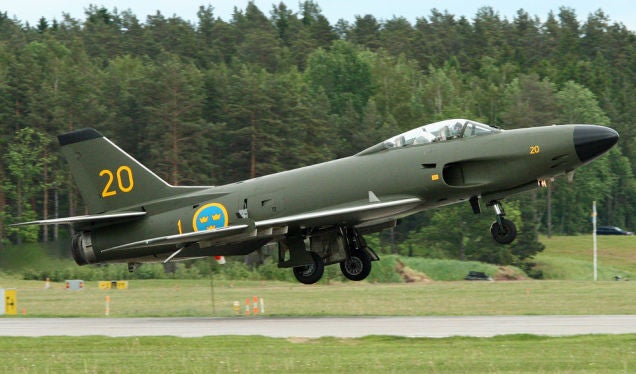
November 3, 1952 – The first flight of the Saab 32 Lansen, a two-seat transonic fighter-bomber developed by Saab for the Swedish Air Force. Originally designed as one of the first dedicated ground attack jets, Saab produced three principal variants: the A 32A for ground attack, the J 32B for aerial combat, and the S 32C for reconnaissance. Plagued by a rash of fatal crashes early in its operations, the Lansen was phased out beginning in 1971 in favor of the Saab 37 Viggen , though some continued operations into the 1990s as a target tug and as an electronics warfare platform. A total of 450 Lansens were produced from 1954-1960, and it was the last purpose-built ground attack aircraft developed for Sweden. (Photo by Alan Wilson via Wikimedia Commons )
!!! UNKNOWN CONTENT TYPE !!!
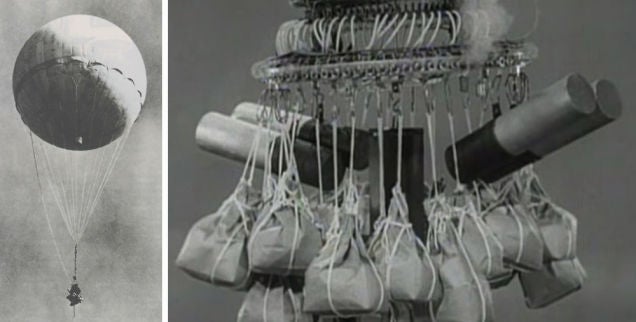
November 3, 1944 – The first Japanese Fu-Go balloon bombs are launched against North America. The Fu-Go ( balloon bomb ) was a hydrogen-filled balloon launched from Japan and intended to travel to North America carried by the Pacific jet stream . The first ever weapon designed with an intercontinental range, the balloons were armed with either a small antipersonnel bomb or multiple incendiary devices, or both, and were intended to kill civilians or start forest fires in the Pacific Northwest. Over 9,000 were launched, but only one Fu-Go attack resulted in fatalities when a group of picnickers discovered one on the ground in Oregon. One of the bombs detonated, killing a pregnant woman and five children. (US Army photo; US Navy photo)
!!! UNKNOWN CONTENT TYPE !!!
!!! UNKNOWN CONTENT TYPE !!!
!!! UNKNOWN CONTENT TYPE !!!
!!! UNKNOWN CONTENT TYPE !!!
!!! UNKNOWN CONTENT TYPE !!!
!!! UNKNOWN CONTENT TYPE !!!
!!! UNKNOWN CONTENT TYPE !!!
If you enjoy these Aviation History posts, please let me know in the comments. And if you missed any of the past articles, you can find them all at
Planelopnik History
. You can also find more stories about aviation, aviators and airplane oddities at
Wingspan
.
!!! UNKNOWN CONTENT TYPE !!!
 "OpposResidentLexusGuy - USE20, XF20, XU30 and Press Cars" (jakeauern)
"OpposResidentLexusGuy - USE20, XF20, XU30 and Press Cars" (jakeauern)
11/03/2017 at 12:54, STARS: 0
The sheer size of the Spruce Goose is just insane to me. I can’t fathom it.
 "Rusty Vandura - www.tinyurl.com/keepoppo" (rustyvandura)
"Rusty Vandura - www.tinyurl.com/keepoppo" (rustyvandura)
11/03/2017 at 12:55, STARS: 0
In the Spruce Goose pic, I’m drawn to the radial engine-powered helicopter behind it.
 "TheRealBicycleBuck" (therealbicyclebuck)
"TheRealBicycleBuck" (therealbicyclebuck)
11/03/2017 at 12:57, STARS: 0
I saw the Goose in person before it was moved north. That thing is BIG.
 "Jayhawk Jake" (jayhawkjake)
"Jayhawk Jake" (jayhawkjake)
11/03/2017 at 13:16, STARS: 2
The F-7 has my favorite front-on profile of any airplane in the history of aviation.
 "WilliamsSW" (williamssw)
"WilliamsSW" (williamssw)
11/03/2017 at 13:42, STARS: 1
I’m curious - has anyone ever assessed whether the Spruce Goose was really capable of flight? IIRC, Hughes never got it out of ground effect, and mainly did it as a raised middle finger to his detractors.
Flying in ground effect doesn’t prove much though.
 "ttyymmnn" (ttyymmnn)
"ttyymmnn" (ttyymmnn)
11/03/2017 at 14:22, STARS: 1
Not that I have read. My guess is that it would have been woefully underpowered for its size.
 "ttyymmnn" (ttyymmnn)
"ttyymmnn" (ttyymmnn)
11/03/2017 at 14:22, STARS: 0
Agreed. It’s just dead sexy all the way around. The pinnacle of the piston-powered warbird.
 "ttyymmnn" (ttyymmnn)
"ttyymmnn" (ttyymmnn)
11/03/2017 at 14:34, STARS: 1
Looks like a Bell 47B. It wasn’t a radial, though. It was a 178 hp Franklin 6V4-178-B3 piston engine.
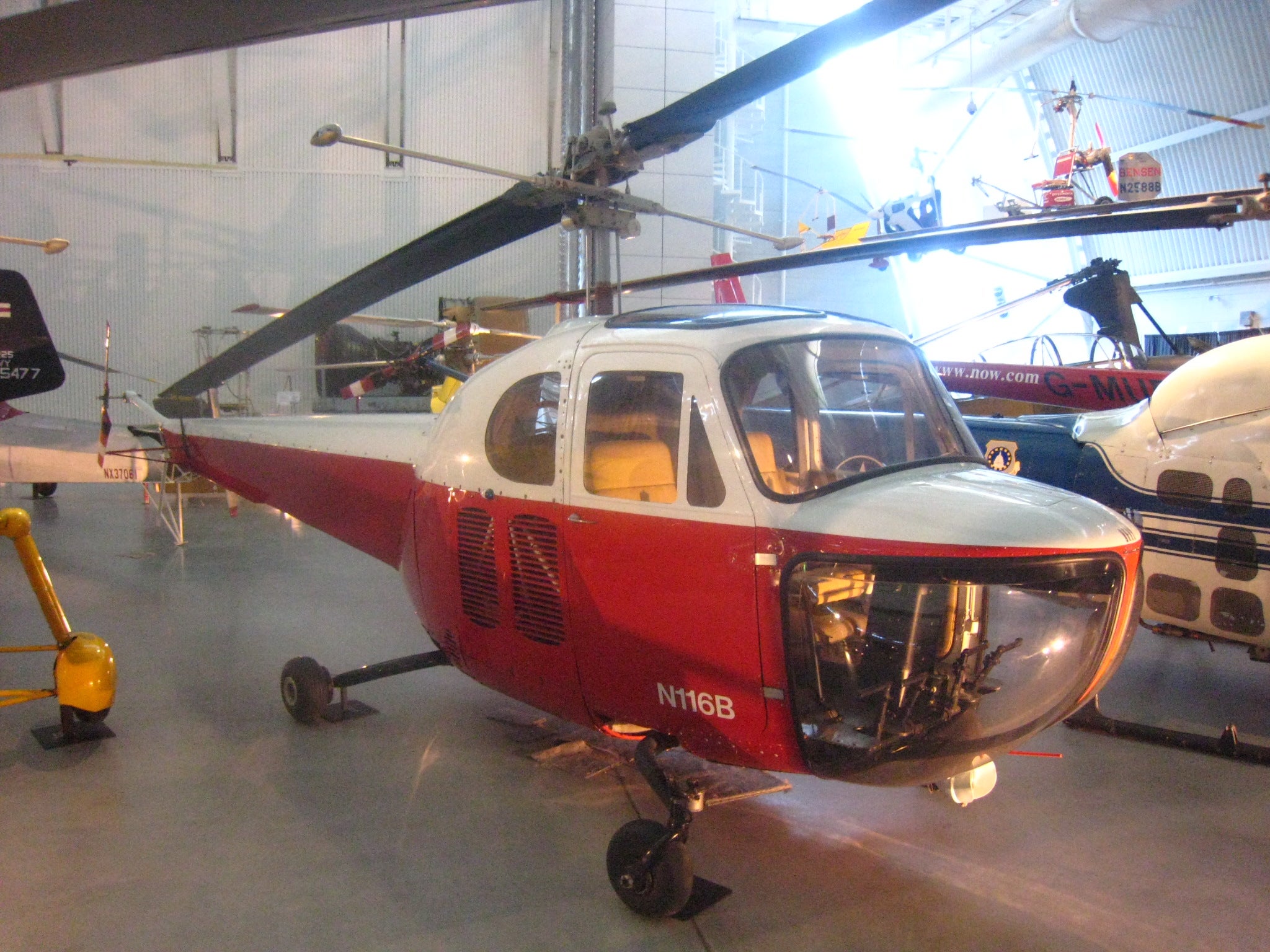
 "WilliamsSW" (williamssw)
"WilliamsSW" (williamssw)
11/03/2017 at 14:34, STARS: 0
Yeah, I can’t imagine that it would have achieved its design goals, whatever they were. It would be interesting to me to know if it’s capable of even getting out of ground effect at all.
The scale of that thing is hard to assess from photos - but those propellers are 17' in diameter and look wayyyyy too tiny against that hull and wing.
 "ttyymmnn" (ttyymmnn)
"ttyymmnn" (ttyymmnn)
11/03/2017 at 14:35, STARS: 1
HH never did anything small. Remember, he wanted to put two Shermans inside it.
 "ttyymmnn" (ttyymmnn)
"ttyymmnn" (ttyymmnn)
11/03/2017 at 14:37, STARS: 1
I was looking for pictures just now, and found this one. It looks like they assembled it in a dry dock.
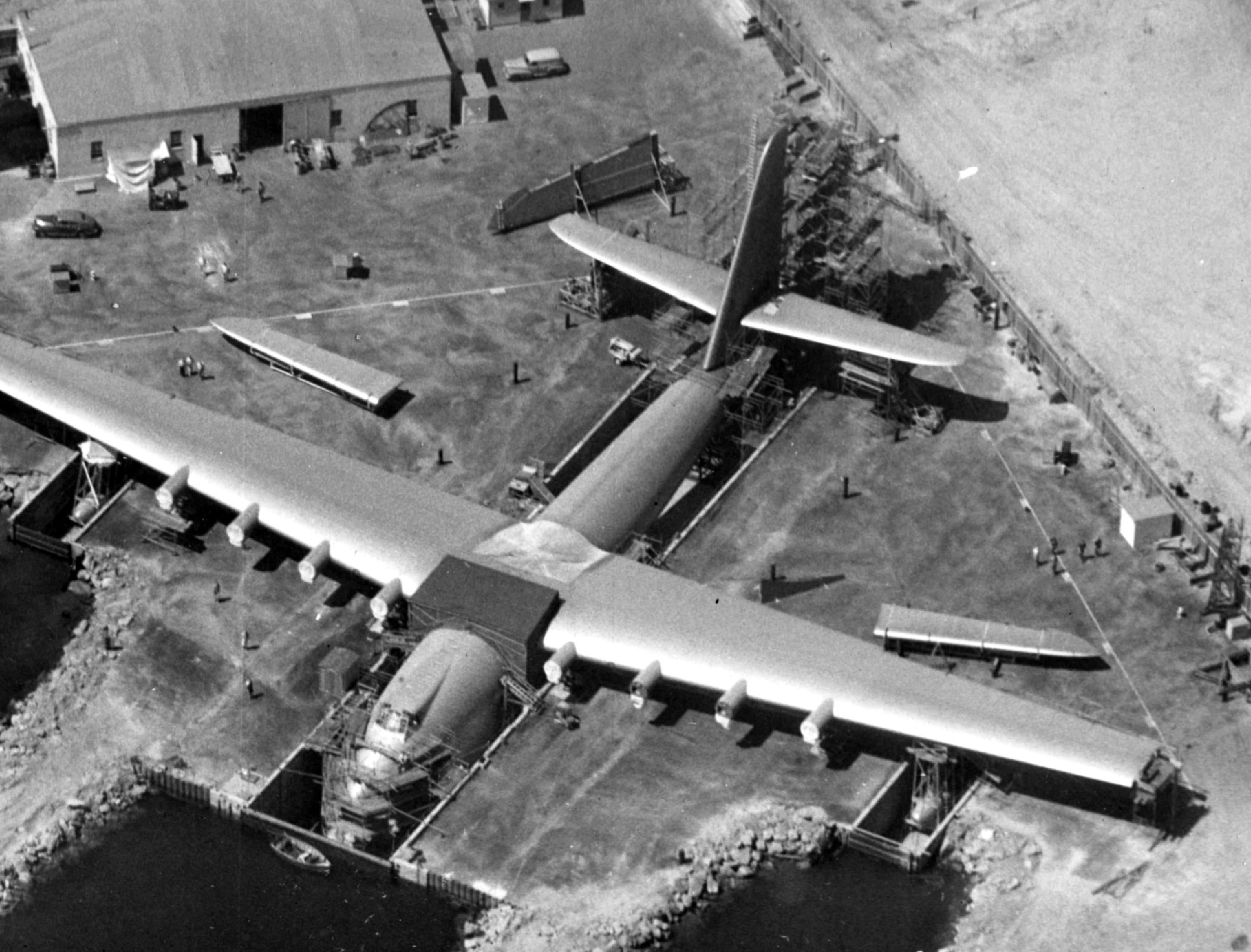
 "WilliamsSW" (williamssw)
"WilliamsSW" (williamssw)
11/03/2017 at 14:41, STARS: 1
And clearly a custom made dry dock, too. Wikipedia says that they built a hangar around it once the assembly was finished. Crazy.

11/03/2017 at 15:37, STARS: 0
If you want radial-powered choppers, you want a Sikorsky H-5 , -19 , -34 or CH-37 .

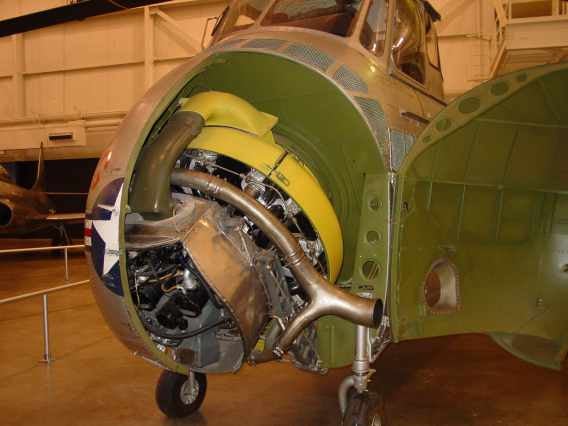
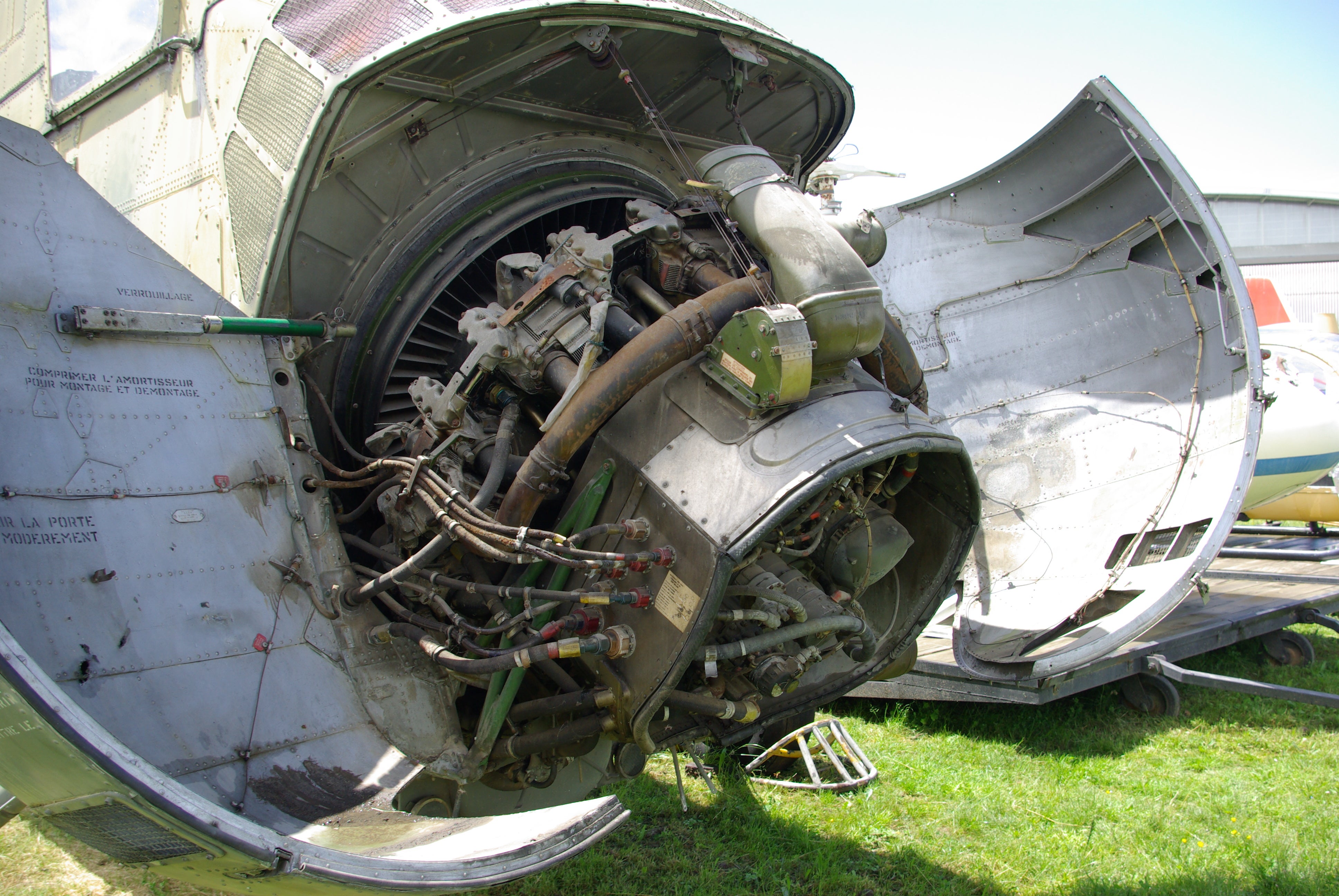
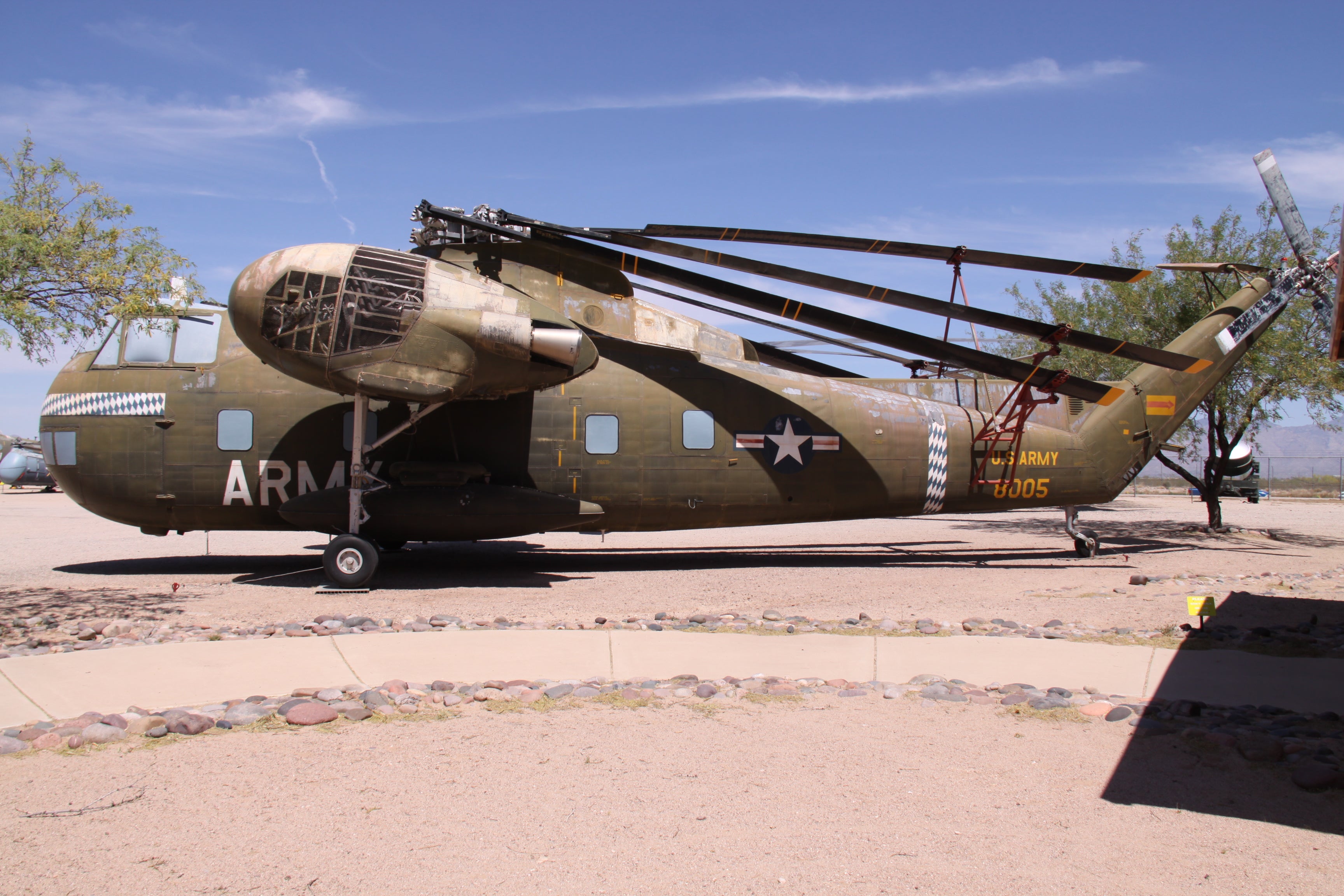
 "ranwhenparked" (ranwhenparked)
"ranwhenparked" (ranwhenparked)
11/03/2017 at 17:58, STARS: 2
Most of what I’ve read indicates that it was likely too underpowered for full flight, but should have been perfectly capable of extended range cruising in ground effect. The Navy considered leasing it for a ground effect transport test program as late as the ‘70s, but it never went anywhere.
On the other hand, there is also ample evidence that Hughes intentionally didn’t even try to lift off for a full flight, since he only had permission to do taxi tests and the aircraft wasn’t even legal to fly as a test craft yet, and the slight lift off from the water and quick landing allowed him to demonstrate airworthiness while maintaining plausible deniability that the liftoff was accidental. Those on the plane with him said he seemed genuinely surprised and actually a bit scared that it lifted off as quickly and easily as it did, he wanted it to happen, but hadn’t anticipated it happening right then.
 "ranwhenparked" (ranwhenparked)
"ranwhenparked" (ranwhenparked)
11/03/2017 at 18:00, STARS: 1
He always wanted to do things big - in the ‘70s, he went through a couple of proposals to expand the Sands into the world’s largest hotel and casino (but couldn’t make up his mind and never executed any of them). He also at one point wanted to build the world’s largest airport in the desert outside Las Vegas and link it to Los Angeles with a high speed bullet train, and also at one point threw out the idea of building the world’s tallest building in Vegas.
 "ttyymmnn" (ttyymmnn)
"ttyymmnn" (ttyymmnn)
11/03/2017 at 18:09, STARS: 0
Rich, full of big ideas, never completed anything. Sounds like our president.
 "WilliamsSW" (williamssw)
"WilliamsSW" (williamssw)
11/03/2017 at 18:19, STARS: 0
Yeah, I was kinda thinking that it might not have enough power to fly outside of ground effect- at least not safely.
I didn’t know that the Navy looked at it for ground effect research but that seems logical, considering that it was supposedly kept up mechanically for a long time. Thanks!
 "ranwhenparked" (ranwhenparked)
"ranwhenparked" (ranwhenparked)
11/03/2017 at 18:22, STARS: 1
Hughes competed lots of things, he just tended to have a short attention span and would jump from one idea to another - golf, movies, airlines, aircraft, casinos, hotels, mining, broadcasting, real estate development, and I believe he also had a beer company at one point.
 "ranwhenparked" (ranwhenparked)
"ranwhenparked" (ranwhenparked)
11/03/2017 at 18:28, STARS: 1
It was kept in climate controlled storage and allegedly in flight ready condition, with regular engine runs, until shortly after Hughes’ death in 1976. Once in a while, he would call the hanger and tell them to get it ready because he wanted to fly, then would quickly call back and cancel. The Navy got interested when Hughes’ heirs decided to close down the storage hanger and law off the staff, due to the massive maintenance expenses. The Navy realized they had a narrow window of time to act, if they wanted to try it while it was still flight worthy. Eventually, they decided the cost and logistics of a full flight test program wouldn’t add enough unique data to what could be learned from scale models and computer analysis to justify the expense.
 "gmporschenut also a fan of hondas" (gmporschenut)
"gmporschenut also a fan of hondas" (gmporschenut)
11/04/2017 at 01:33, STARS: 1

probably, though slow http://www.bbc.com/news/uk-wales-26025939
 "WilliamsSW" (williamssw)
"WilliamsSW" (williamssw)
11/04/2017 at 12:36, STARS: 1
Aha - stability concerns aside (which can’t really be proven easily either way), the Martin Mars and Boeing Clipper seem like decent comps —- but the Me323 is very comparable. The fact that it went into production suggests that there’s a good chance that the H-4 likely could have as well. Thanks!